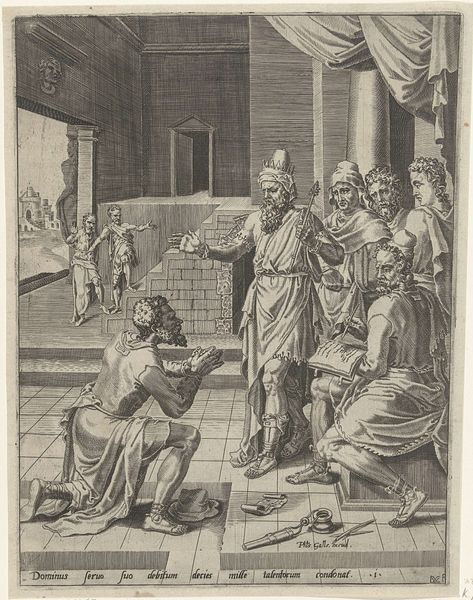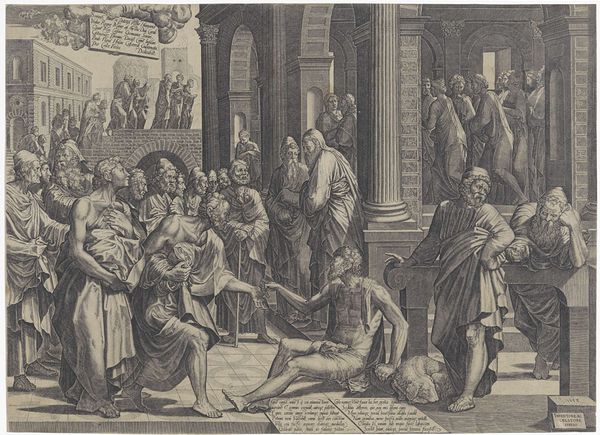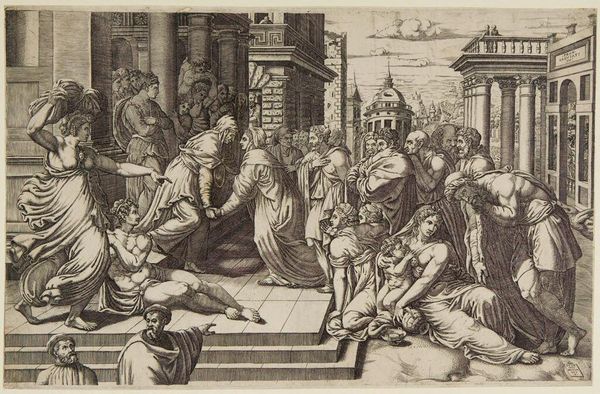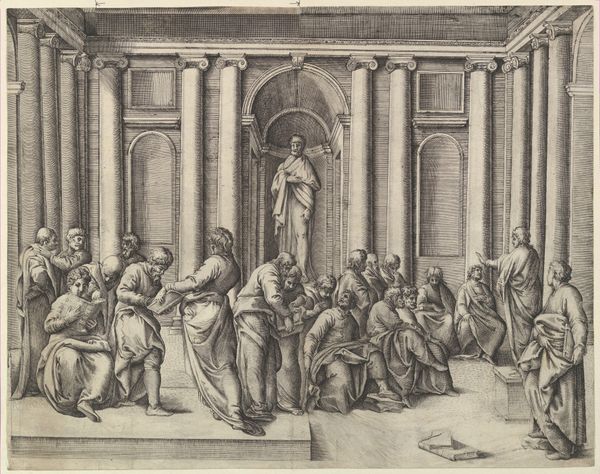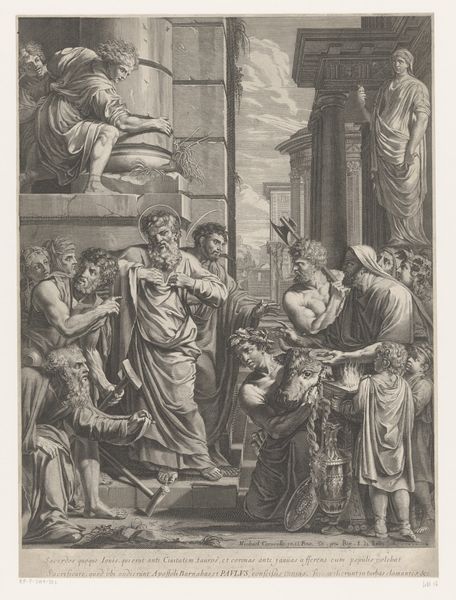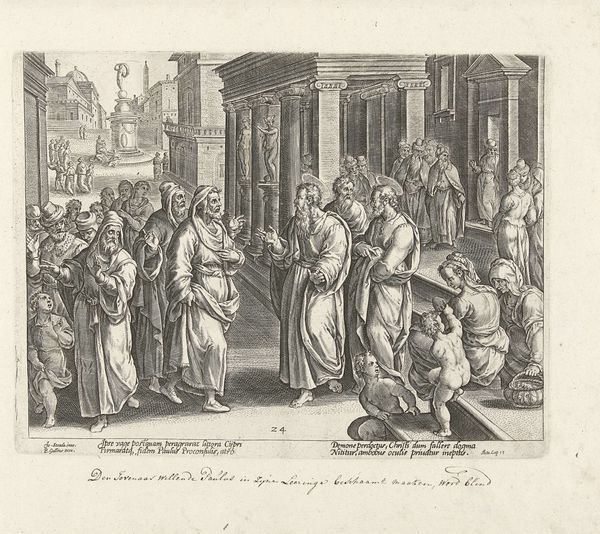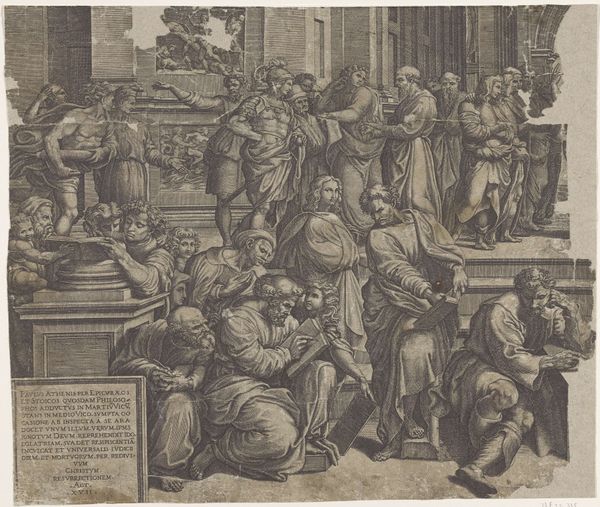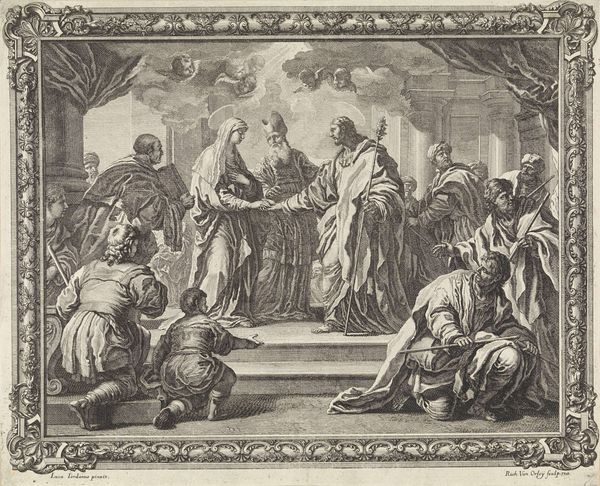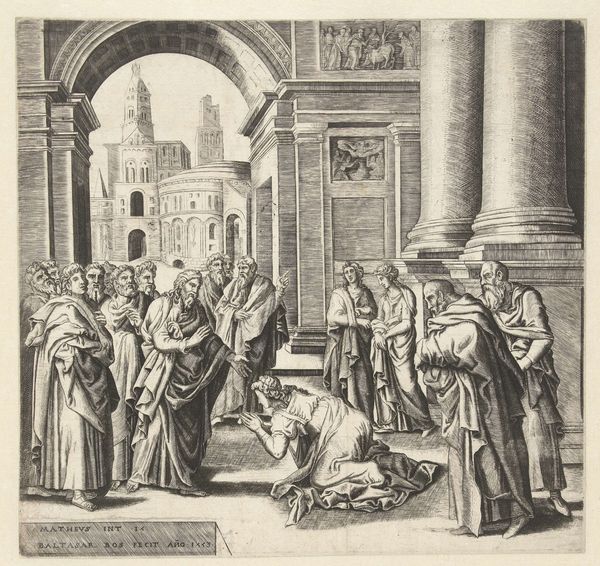
print, engraving
# print
#
old engraving style
#
figuration
#
line
#
genre-painting
#
history-painting
#
northern-renaissance
#
engraving
Dimensions: height 269 mm, width 403 mm
Copyright: Rijks Museum: Open Domain
Editor: Here we have "Christus in het huis van Marta en Maria" or "Christ in the House of Martha and Mary," a 1556 engraving by Pieter van der Heyden, currently housed at the Rijksmuseum. I'm struck by how domestic the scene feels despite the obviously religious figures depicted. What's your take on this work? Curator: This engraving provides a fascinating window into 16th-century societal expectations and the construction of gender roles. Look closely at Martha, actively gesturing, seemingly frustrated. What does that action communicate to you, considering the expectations of women at the time? Editor: Well, she looks quite stressed, almost like she's scolding Mary. The contrast between their actions is clear. Mary is passively listening, while Martha is actively serving. It plays into the traditional roles of women at that time, doesn't it? The domestic worker versus the pious listener? Curator: Precisely. It mirrors the patriarchal ideals of the era, where a woman’s worth was often tied to domestic labor and subservience. Even in religious contexts, like here, the print subtly reinforces this dynamic. Think about how religious narratives have historically been used to either liberate or further subjugate marginalized groups. In this image, does piety challenge or solidify these societal constraints? Editor: It seems to reinforce them here. Even though Mary chooses "the better part" by listening to Christ, the engraving visually prioritizes Martha's "work," perhaps suggesting some discomfort or anxiety around women stepping outside the traditional domestic sphere. Curator: Yes, the composition directs our gaze towards Martha's supposed "duties". It begs us to examine how power dynamics operate even within religious narratives, and to recognize these constructed gender roles and biases. Editor: This makes me rethink the whole scene and its possible political undertones. It's much more complex than it initially appeared. Curator: Exactly. Art is a mirror reflecting the ideologies of its time. By understanding the social and historical contexts, we reveal deeper layers of meaning and power.
Comments
No comments
Be the first to comment and join the conversation on the ultimate creative platform.

